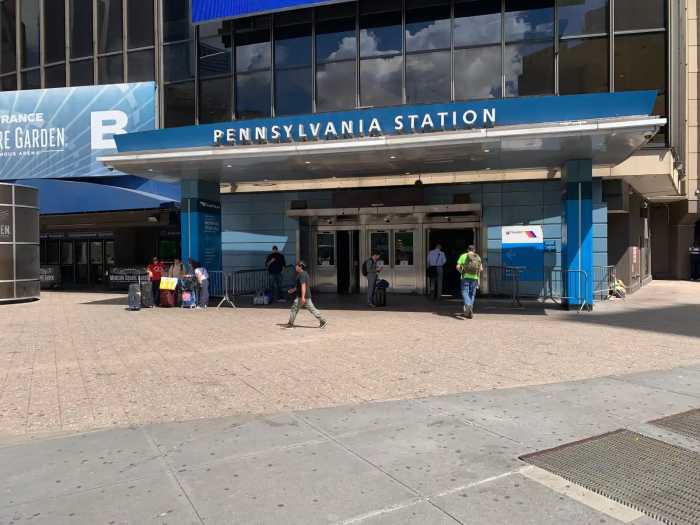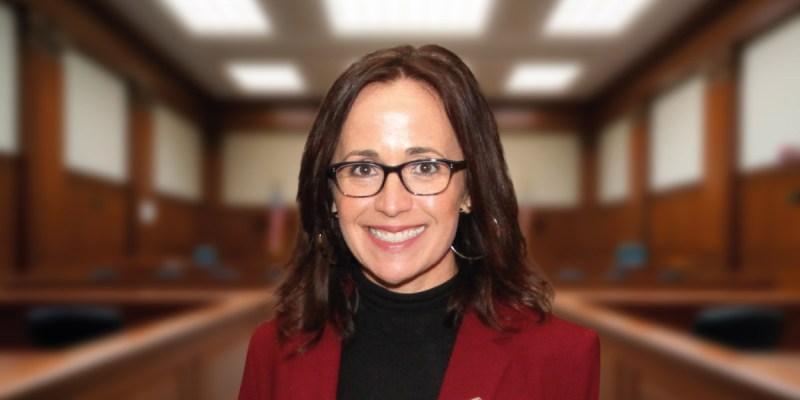Dressed in her Sunday best in the form of a colorful, floral dress and a yellow hat and coat, Louise Stamp took the bus to church on Aug. 31, as she does each weekend. But this was also the first day of new bus routes across Queens, as she offered her opinion not on a Sunday sermon, but the Sunday commute to church.
“I personally don’t have a problem with it,” Stamp said in Long Island City about the changes. “Actually, one of the bus routes truly works in my favor, so I’m looking forward to taking the B62 from Long Island City to Brooklyn.”
The MTA on Sunday launched the Queens Bus Network Redesign, including changes to numerous Queens routes, with “ambassadors” out in force at stops, handing out brochures and answering questions.
This was the culmination of a process that lasted more than five years, including a draft plan developed in 2019, a new plan in 2022, a proposed final plan late in 2023, hearings in 2024, and MTA board approval of final additions this January.
The changes to Queens’ 70-year-old bus system, which carries 800,000 riders daily, were phased in on June 29 with the second and final set implemented Aug. 31.
The MTA also committed to investing $33.7 million annually to deliver “substantive Queens bus service improvements” beyond upgrades within the existing budget.
The MTA calls this a “historic effort to bring new and improved transit service to New York’s largest borough,” including improved connections, greater frequency, and more balanced stop spacing.

The changes include new bus routes and numbers, new “rush routes” to get riders to the subway faster, relocation and sometimes removal of stops and route changes to reduce turns.
The latest changes are primarily in Northwest and Southwest Queens, including Astoria, Long Island City, Jackson Heights, Ozone Park, Woodhaven, Howard Beach, and Far Rockaway.
The MTA said riders can use its Trip Planner, MTA app and Bus Time to plan trips and clarify changes.
“It’s been several decades since we made major changes to Queens bus routes,” according to the agency, which said growth and travel patterns across the borough changed.
The MTA in 2018 redesigned Staten Island’s express bus service and in June 2022 revamped local bus network for the Bronx with more changes expected.

MTA officials said they used five years of feedback to build what they are billing as a better bus system that should provide more reliable, faster and simplified service with better connections.
“I believe extending the bus route is perfect, not only for the New York residents that have been here, but also the new residents that have just arrived,” Queens Village resident Myles Gross said as he rode a bus back from visiting a friend.
Still, Gross said, it’s important that there are enough buses so extensions don’t lead to delays.
Rerouting the B62 and adding the new Q80
The B62 was rerouted and extended along 21st Street in Queens to Astoria Houses, while a new route, the Q80 Local, will provide more frequent and new overnight service along Lefferts Boulevard.
While some riders see benefits, many believe they aren’t being impacted. Artemis Mavridou in Astoria said she took the bus three stops as always.
“The bus changes haven’t affected me in any way,” said Timmy Johnson. “I’m just going to work, and it’s just fine.”
Queens bus riders, as of June 29, who tap to pay using the same device or card will get a second free bus transfer on every trip. The first transfer must be made within two hours of the first tap, and the second must be made within three hours.
The MTA is piloting this additional free transfer for approximately six months while evaluating the new Queens bus network.
While some were pleased, some riders were frustrated on Sunday, including one man who said he had been waiting an hour for a bus.
Others like Stamp, who boarded a bus soon after talking, simply prefer traveling above ground to the subway.
“I enjoy taking the bus because when you take the bus, you get to see different neighborhoods that you wouldn’t necessarily pass through and find different shopping places,” Stamp said. “I even discovered restaurants in different neighborhoods, taking the bus, which piqued my curiosity as I was riding.”
The MTA plans to analyze impacts such as changes in bus speeds, ridership, reliability, travel times, and rider satisfaction over the first six months of the new network.
They said this analysis “will inform future adjustments to the bus network to ensure that service is meeting its stated goals.”





































